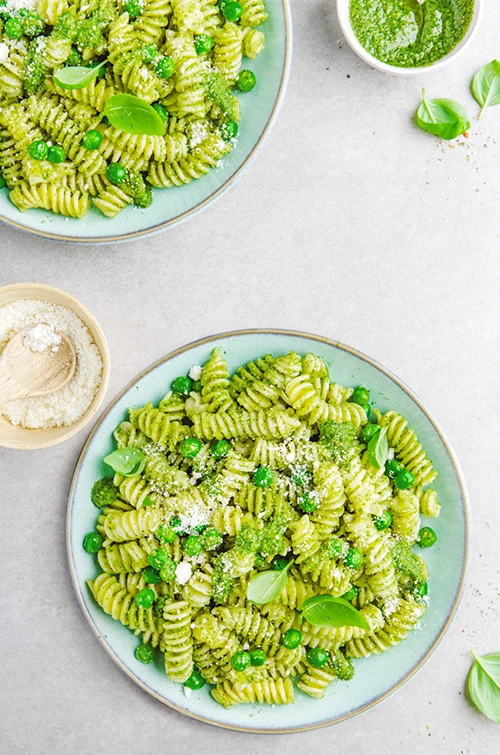

Top Health Benefits of Green Goddess Pesto Pasta You Need to Know
This Green Goddess Pesto Pasta is a nutrient-rich dish packed with a variety of wholesome ingredients that contribute to overall health and wellness. The pasta provides complex carbohydrates that fuel the body with sustained energy, while the green peas offer dietary fiber, plant-based protein, and essential vitamins such as vitamin K, vitamin C, and folate. The vibrant green pesto sauce, typically made from fresh basil, olive oil, nuts (like walnuts or almonds), garlic, and lemon juice, is a powerhouse of antioxidants and heart-healthy fats. Olive oil in particular is rich in monounsaturated fats that support cardiovascular health and reduce inflammation. The optional addition of Parmesan cheese introduces calcium and further enhances the protein content. Altogether, this dish combines plant-based goodness with Mediterranean-inspired flavors, offering a balanced meal that supports digestive health, immune function, and heart health, making it both delicious and nourishing.
Recipe :
Serves 4 people
Enjoy your fresh and healthy Green Goddess Pesto Pasta!
When preparing this pasta, it’s essential to ensure the pesto ingredients are fresh, especially the basil, to achieve the best flavor and color. Avoid overcooking the pasta—al dente texture is preferred, not only for taste but also for better glycemic response. If using frozen peas, add them in the final minutes of boiling the pasta so they remain vibrant and slightly crisp. Blending the pesto slowly with high-quality extra virgin olive oil prevents it from becoming bitter. It’s also recommended to reserve a small amount of the starchy pasta water and mix it with the pesto before combining with the pasta to help the sauce coat the noodles smoothly. For those sensitive to dairy, Parmesan cheese can be reduced or replaced with nutritional yeast. Always taste and adjust seasoning with salt and lemon juice at the end, as the pesto’s flavor can vary depending on the freshness of the herbs and nuts used.

This dish aligns well with certain dietary lifestyles while being unsuitable for others. It is ideal for those following the Mediterranean diet, as it emphasizes plant-based ingredients, healthy fats, and fresh herbs. It's also fully vegetarian, offering meatless nutrition without compromising on taste. Those adhering to the DASH (Dietary Approaches to Stop Hypertension) diet can enjoy this meal if they use reduced-sodium cheese or omit added salt. With slight modifications—such as removing the Parmesan cheese—it can suit vegan diets as well. However, it is not compatible with a ketogenic or Paleo lifestyle due to the high carbohydrate content from pasta and peas. It also does not fit low-calorie, high-protein, or gluten-free regimens unless the pasta is specifically gluten-free and portion sizes are carefully controlled. Individuals with specific dietary needs should adjust ingredients accordingly to ensure alignment with their health goals.
...